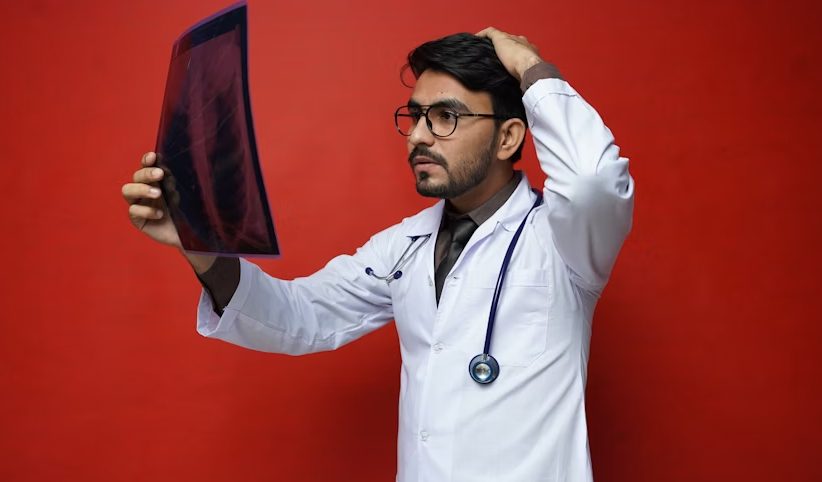
@ShahidNShah


Choosing a vein doctor today goes beyond credentials or friendly staff. Today, treatment tools matter just as much. From better mapping to less invasive options, modern vein clinics rely on tech to improve results and comfort. Even in Springfield, MA, many practices use advanced equipment to guide care, whether it’s for sclerotherapy or ablation therapy. That isn’t unique to one region; clinics across the country are adopting the same gear.
That is why nowadays, when you choose a vein doctor, it is essential to check the technology they use. Understanding what a clinic uses can help you make a more informed decision and feel confident in the treatment you receive. So, if you want to make the best decision for yourself, keep reading to the end!
When it comes to vein care, the right technology can completely change the outcome. Older methods often involved more pain, longer recovery, and less accuracy. Today, modern tools help doctors see inside the body without making cuts.
For example, ultrasound scans show how blood flows and help catch deeper vein problems early. Treatments like radiofrequency ablation or laser therapy rely on precise tools to close damaged veins without removing them surgically. This leads to fewer side effects, less downtime, and a faster return to normal life.
Many clinics also use guided injections and real-time imaging to make sure each step is exact. These updates aren’t just for comfort—they raise the success rate and lower risks. That’s why tech isn’t a bonus in vein care—it’s essential.
Before deciding on a vein clinic, take time to review the technologies they use. Some tools and methods make a real difference in comfort, recovery, and results.
Here are a few technologies to check before you commit.
Spider veins and small varicose veins respond well to sclerotherapy, which involves injecting a solution to collapse the vein over time. However, the old method, which relies solely on sight, lacks precision. When clinics use ultrasound-guided foam sclerotherapy, the solution is injected directly into the problem vein.
The foam spreads evenly inside the vein, and guidance helps the doctor avoid nearby vessels. So, if you’re meeting a vein doctor in Springfield, MA, particularly look for one who uses this technology. This is because what was once a cosmetic-only treatment has evolved into one that offers more predictable healing and reduced risk.
First up: vein mapping with ultrasound. Before any treatment, a detailed map of your vein system is essential. Clinics using duplex ultrasound can identify hidden trouble spots. This method enables doctors to accurately trace faulty veins, and then they can plan effective treatments.
If you’re meeting a vein doctor, particularly look for one who uses real-time ultrasound. That tool ensures they treat the exact vein that needs care, but without extra guessing or errors. It saves time and increases safety.
When veins are damaged, modern clinics often turn to heat-based methods, such as radiofrequency ablation (RFA) or endovenous laser therapy (EVLT). These systems use energy to close leaking veins from the inside gently. Compared to old-school vein stripping, this is far less traumatic and much faster.
Clinics that offer both laser and RFA demonstrate their ability to match treatment type to vein size and location. For patients, word choices may be confusing, but what matters is whether the doctor picks the right tool. The best results come from matching therapy to the problem.
Sometimes, damaged veins are too large to be treated effectively with injection or ablation alone. In such cases, a procedure called microphlebectomy can help. It removes the vein through small punctures, not long cuts, and recovery is swift. It works best when veins are bulging but still close to the skin’s surface.
Clinics that offer microphlebectomy alongside other tools provide genuine all-in-one care. This versatility means patients get a tailored strategy, combining methods for the safest, most complete outcome.
After treatment, wearing compression stockings helps veins heal and reduces swelling. While a basic size will fit, some clinics now use digital sizing tools to ensure the right level of support. This might feel small, but proper compression matters for circulation and comfort.
Getting an accurate fit supports healing and limits doctor visits for adjustments. It shows a clinic cares about the whole process, not just the day of treatment.
Good care doesn’t stop once your treatment is done. Many clinics now offer secure online portals where patients can view recovery steps, ask follow-up questions, or share photos to track healing. It’s a simple way to stay connected without needing another visit.
Having this kind of digital support helps you stay on track and reduces the chances of missing anything important. It also gives peace of mind, especially when recovering at home. Clinics that use this system usually focus more on patient comfort and long-term results.
The results you get from vein treatment rely on more than just the doctor. The technology they use matters, too. From better scans to smart recovery tools, these options help you heal faster and feel more confident. Ask about the tools they use—it shows you’re making a smart choice.

Parkinson’s Disease (PD), a complex and progressive neurodegenerative disorder affecting nearly one million Americans, presents a broad spectrum of motor and non-motor symptoms, making it difficult to …
Posted Jun 26, 2025 Artificial Intelligence Neurology
Connecting innovation decision makers to authoritative information, institutions, people and insights.
Medigy accurately delivers healthcare and technology information, news and insight from around the world.
Medigy surfaces the world's best crowdsourced health tech offerings with social interactions and peer reviews.
© 2025 Netspective Foundation, Inc. All Rights Reserved.
Built on Dec 16, 2025 at 1:07pm